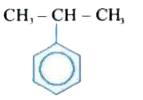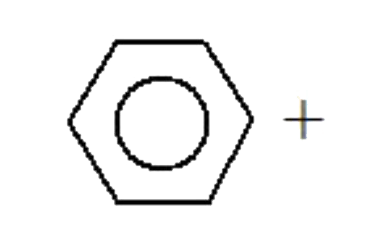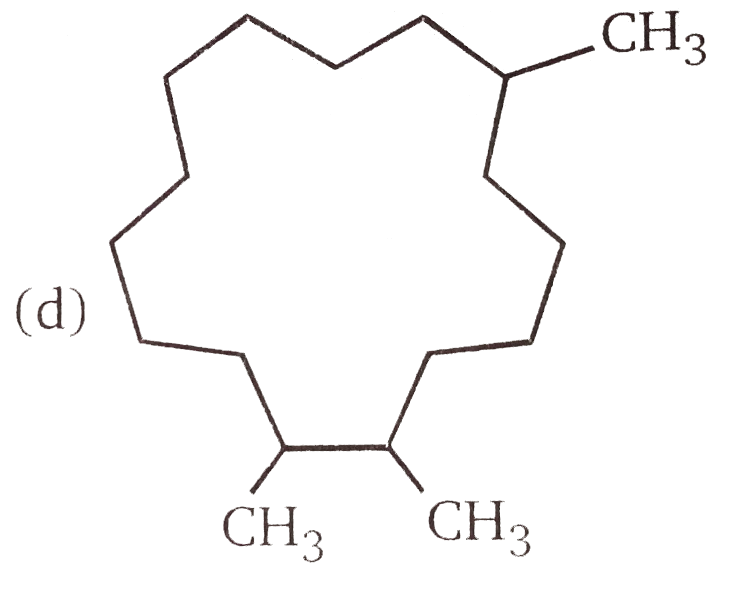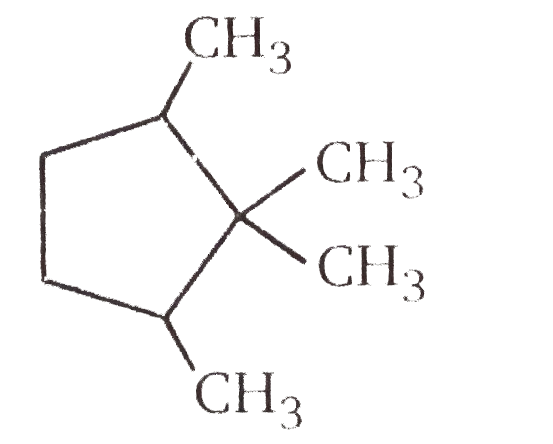CH2=CH−CH2−ClHOCl−−−→(X) is
H2C∣Cl−C∣OHH−C∣ClH2
H2C∣OH−C∣ClH−C∣ClH

H3C−C∣ClH−CH3
The correct Answer is:B
To solve the question CH₂=CH−CH₂−Cl+HOCl→(X), we will analyze the reaction step by step.
Step 1: Identify the Reactants
The reactant is an allylic halide, specifically 3-chloropropene (CH₂=CH-CH₂-Cl). The reaction is taking place with hydroxide ion (OH⁻) from HOC l.
Hint: Identify the functional groups and the type of reaction involved.
Step 2: Mechanism of Reaction
The hydroxide ion (OH⁻) acts as a nucleophile and will attack the carbon atom involved in the double bond (C=C). This can occur through two possible mechanisms:
1. Mechanism 1: The nucleophile attacks the carbon atom that is part of the double bond, leading to the formation of a carbocation intermediate.
2. Mechanism 2: The double bond can break in such a way that the nucleophile attacks the carbon adjacent to the carbon with the chlorine atom.
Hint: Consider how the double bond can react with the nucleophile and the stability of the resulting carbocation.
Step 3: Formation of Carbocation
In Mechanism 1, if the nucleophile attacks the terminal carbon of the double bond, a primary carbocation is formed. In Mechanism 2, if the nucleophile attacks the middle carbon, a more stable secondary carbocation is formed.
- Intermediate from Mechanism 1: CH₂⁺-CH-CH₂-Cl (Primary carbocation)
- Intermediate from Mechanism 2: CH₂-CH⁺-CH₂-Cl (Secondary carbocation)
Hint: Determine which carbocation is more stable based on the inductive effect and the number of alkyl groups attached.
Step 4: Stability of Carbocations
The secondary carbocation (from Mechanism 2) is more stable than the primary carbocation (from Mechanism 1) due to the inductive effect of the neighboring carbon atoms. The chlorine atom (Cl) has a -I effect, which pulls electron density away, but since it is further away from the positively charged carbon in the secondary carbocation, it is less destabilizing.
Hint: Compare the stability of the two carbocations formed.
Step 5: Nucleophilic Attack
Once the more stable secondary carbocation is formed, the hydroxide ion (OH⁻) will attack the positively charged carbon atom. This leads to the formation of the final product.
Final Product (X): CH₂-CH(OH)-CH₂-Cl
Step 6: Conclusion
The product of the reaction is 3-chloro-1-propanol (X), where the hydroxyl group (OH) has replaced the chlorine atom (Cl) at the carbon adjacent to the double bond.
Final Answer: (X) is CH₂-CH(OH)-CH₂-Cl (3-chloro-1-propanol).
---
The reactant is an allylic halide, specifically 3-chloropropene (CH₂=CH-CH₂-Cl). The reaction is taking place with hydroxide ion (OH⁻) from HOC l.
The hydroxide ion (OH⁻) acts as a nucleophile and will attack the carbon atom involved in the double bond (C=C). This can occur through two possible mechanisms:
2. Mechanism 2: The double bond can break in such a way that the nucleophile attacks the carbon adjacent to the carbon with the chlorine atom.
In Mechanism 1, if the nucleophile attacks the terminal carbon of the double bond, a primary carbocation is formed. In Mechanism 2, if the nucleophile attacks the middle carbon, a more stable secondary carbocation is formed.
- Intermediate from Mechanism 2: CH₂-CH⁺-CH₂-Cl (Secondary carbocation)
The secondary carbocation (from Mechanism 2) is more stable than the primary carbocation (from Mechanism 1) due to the inductive effect of the neighboring carbon atoms. The chlorine atom (Cl) has a -I effect, which pulls electron density away, but since it is further away from the positively charged carbon in the secondary carbocation, it is less destabilizing.
Once the more stable secondary carbocation is formed, the hydroxide ion (OH⁻) will attack the positively charged carbon atom. This leads to the formation of the final product.
The product of the reaction is 3-chloro-1-propanol (X), where the hydroxyl group (OH) has replaced the chlorine atom (Cl) at the carbon adjacent to the double bond.
Topper's Solved these Questions
- GENERAL ORGANIC CHEMISTRYBOOK - FIITJEECHAPTER - GENERAL ORGANIC CHEMISTRYEXERCISE - MORE THAN ONE CORRECT CHOICES
24 Videos
- GENERAL ORGANIC CHEMISTRYBOOK - FIITJEECHAPTER - GENERAL ORGANIC CHEMISTRYEXERCISE - COMPREHENSION TYPE
18 Videos
- GENERAL ORGANIC CHEMISTRYBOOK - FIITJEECHAPTER - GENERAL ORGANIC CHEMISTRYEXERCISE - Section (I) [Jee mains]: With Single Correct Choice
100 Videos
- GASEOUS STATEBOOK - FIITJEECHAPTER - GASEOUS STATEEXERCISE - MATCHING LIST TYPE QUESTION
1 Videos
- HYDROCARBONSBOOK - FIITJEECHAPTER - HYDROCARBONSEXERCISE - SINGLE INTEGER ANSWER TYPE QUESTION
9 Videos
Similar Questions
Knowledge Check
Identify the final product CH2=CH2Cl2/H2O−−−−−→X−aq.KOH−−−−−−→Y
A2-chloroethanolB2-chloromethanolC1-chloroethanolDEthylene giycolIn the given
 +CH5−CH2−CH2−ClAlCl3−−→ Product the major product will be A
+CH5−CH2−CH2−ClAlCl3−−→ Product the major product will be A B
B C
C DMixture of (2) & (3)
DMixture of (2) & (3)CH3CH2CH=CH2NBs−−→Xalc.KOH−−−−−→Y.
The compound Y isABut-2-en-2-olBBut-3-en-1-olC1,3-ButadienceD1,2-Butadiene
 + CH3−CH2−CH2−CH2−ClAlCl3−−→ Hydrocarbon (X) major product X is
+ CH3−CH2−CH2−CH2−ClAlCl3−−→ Hydrocarbon (X) major product X is
View SolutionGive the IUPAC name of the following compounds:
(a) CH3−CH2−CH3∣CH−CH2−CH2−CH2−CH2−CH2−CH2−CH2−CH3∣CH−CH3
(b) CH3−CH2−OH∣CH−CH2−CH2−CH2−CH2−CH2−CH2−CH2−CH2−CH3∣CH−CH3
CH−CH2−CH2−CH2∣−CH2∣−CH3 CH3−CH2−CH−CH−CH3


View SolutionIn which of the following pairs of carbocations, the first carbocation is more stable than the second ?
(i) CH2=CH−CH2andCH2=CH−CH2−+CH2
(ii) CH3−NH−+CH2and+CH2−OH
(iii) CH3−O−CH2−+CH2andCH3−O−+CH2
(IV) CH3+CH−CH2CH2CH3andCH3CH2−+CH−CH2CH3
View SolutionCCl3−CH=CH2HOCl−−−→P (Major product ),
CCl3−CH=CH2HOCl−−−→'P' is :
View SolutionWhich of the following is/are the chain termination step during photochloration of ethane?
CH3.CH2+.Cl→CH3−CH2−Cl
CH3.CH2+CH3.CH2→CH3CH2CH2CH3
.Cl+.Cl→Cl2
.Cl+.H→HCl
View Solution
